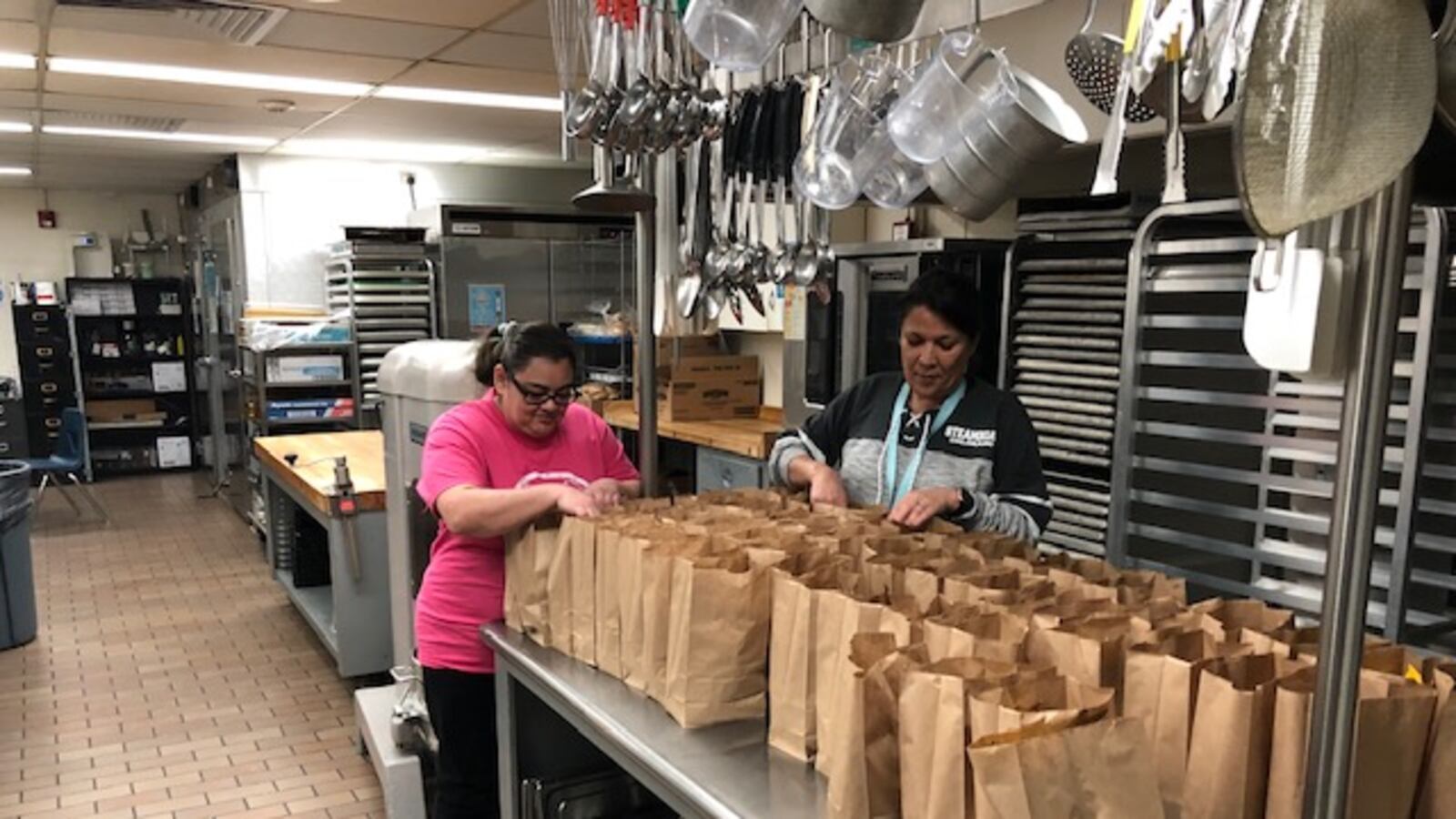In the Sheridan school district just southwest of Denver, longstanding connections with families are paying off as schools prepare students and parents to take on learning from home.
The Sheridan school district, which serves about 1,350 students, has about 90% of students qualifying for free or reduced-price lunches, a measure of poverty, and about 25% of students are identified as homeless — one of the highest rates in the state.
For all districts preparing to move to remote learning, equity in student home access to computers, internet, and parents with time and ability to help are considerations. In Sheridan, those factors guide all the district’s work.
Officials have borrowed ideas from across the country and are getting creative with ways to help their families. The district is outfitting two school buses that it will send out to high-needs neighborhoods to provide WiFi to nearby student homes. District teachers also have handed out paper packets which include activity ideas for parents of younger students and will hand out more as an option for students to engage without technology. And district officials are planning to train parents who need help to work with their children from home.
“We are a small district and have personal connections with our families so the support system has pre-existing structures,” said Shirley Miles, Sheridan’s chief academic officer. “The most important way we will help parents be successful is by reaching out every week to make a connection.”
The district, which has been out of school for more than two weeks, has already been doing that. Teachers contact families regularly. A survey questioned parents on their technology needs and access to the internet, and 92% of parents responded. Teachers, principals and other staff are calling those who haven’t responded.
Family liaisons and a district liaison who works with families experiencing homelessness are also checking in about other needs and tracking those on a master spreadsheet. Toilet paper has been a big one.
As the coronavirus pandemic stretches on, more families that once were hanging on are suddenly in need of help. District officials said they know that if other needs aren’t addressed, students won’t be successful in their work from home.
Just last week, Doria Barajas Bravo, who is a liaison providing district services for students identified as homeless, talked to a district mom who had run out of baby food and diapers. Barajas Bravo was able to collect some from private donors in less than 24 hours.
Even though district staff are working from home, Barajas Bravo stepped out of her home to deliver the baby food and diapers to the family’s front porch.
“They don’t have a car and it would have been very difficult for them,” Barajas Bravo said. “It was an emergency. We’re very lucky. This group of donors, they do everything possible to help us out.”
Barajas Bravo said she’s talked to many families who have recently lost their jobs or had a reduction in work hours. It’s her job to let them know what resources exist, so they don’t end up homeless, on her caseload of what’s known as the federal McKinney Vento program.
“Everyone has been so grateful that somebody from their kids’ school is calling to ask them how they are doing,” Barajas Bravo said as she got emotional. “I catch them before they are McKinney Vento, hopefully.”
The district has taken a similar approach to the distribution of food, technology and other items. Some days, staff have dipped into personal funds to deliver a meal to a family in need.
This week, Sheridan is no longer offering grab-and-go food only at the high school. Now administrators on school buses head out into a mobile home park, an apartment complex, and a bus stop, to make it easier for families to access the free meals.
And especially for some of the families without a home, district officials said they will go out to meet them if needed.
“If they are in motels we are going to distribute the laptops as we would with some of our other families,” said Christine Muldoon, Sheridan’s director of culture, equity and language.
Maria Elsa Rodriguez, a mom of four Sheridan students, said even though she hasn’t been in great need yet, she’s concerned about how remote learning will work. She has one computer in her home and her four students already compete for it. She does have internet access through Comcast’s Internet Essentials program, and she has let the district know that at least one more device in her home would be a great help.
Sheridan is purchasing devices for students — tablets for the youngest, and Chromebooks or laptops for older students. Officials will also look at redistributing devices from schools. Miles said the district is looking at redirecting some grant funds that were going to be used for afterschool programs or tutoring to help in purchasing those devices.
In the meantime, Rodriguez said teachers call regularly to ask if her needs have changed. They ask how her kids are doing with their worksheets. And Rodriguez said she knows how to get ahold of the teachers if she needs them.
Her two high school students mostly do their work on their own, she said, but she’s more involved with her two elementary students.
“I’m not concerned to help them,” Rodriguez said. “But just in case they tell me ‘Mom, we don’t do it like this,’ I say, email your teacher. Ask him or her.”
“As a matter of fact, my 10th grader the other day said, ‘Mom, I need some help,’” Rodriguez said. “I tried to help him and I gave him options, but I said, if you don’t like my way then you can email your teacher.”
Rodriguez said she knows the district is trying, and she is grateful for how officials are connecting with her.
“As of right now they’re doing great,” Rodriguez said.


